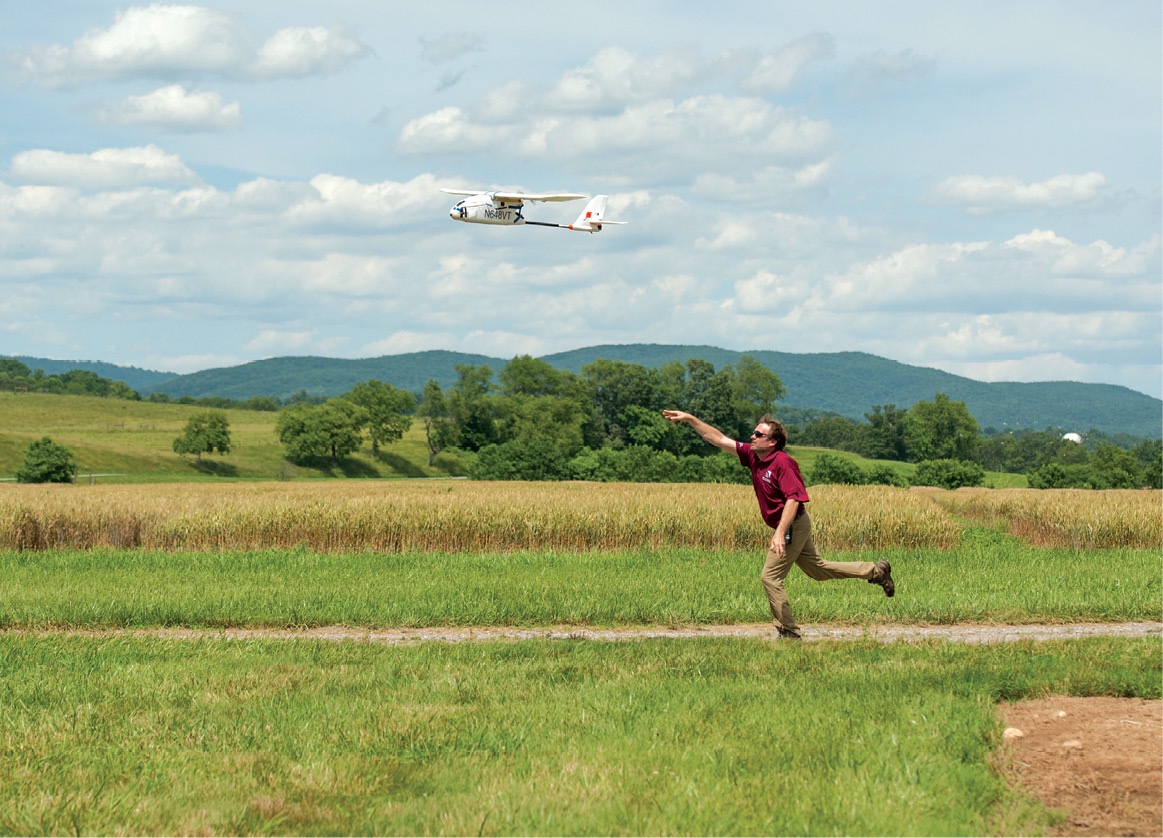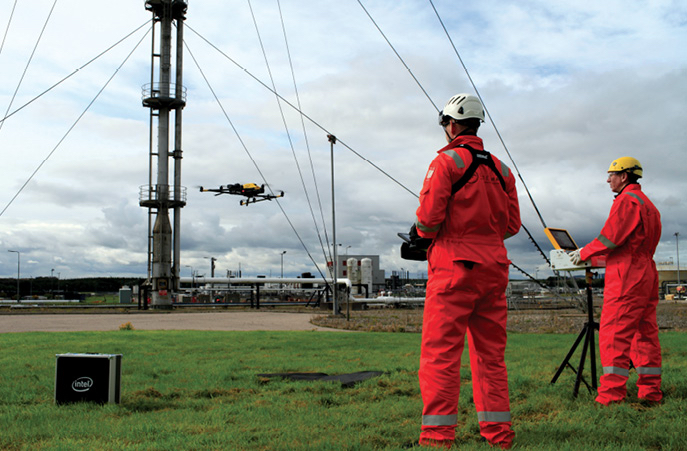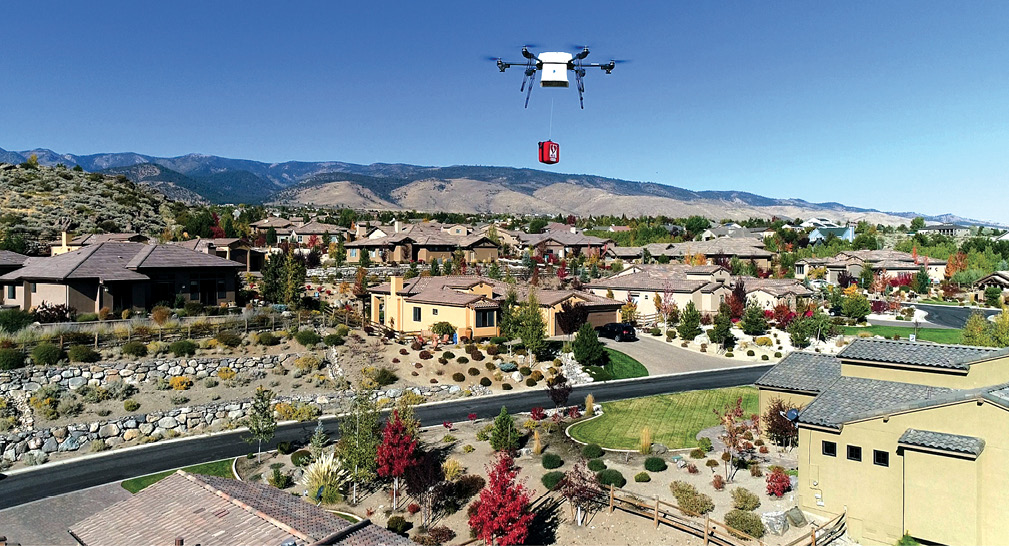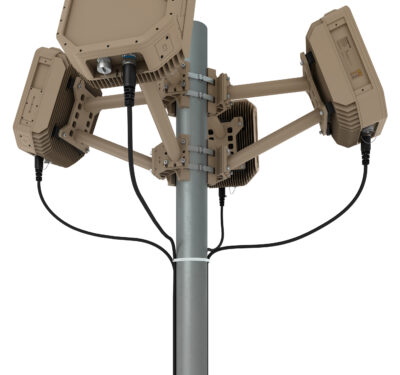
A Virginia researcher launches a 3DR Aero during early tests of NASA’s UAS Traffic Management system Photo Courtesy of the Institute for Critical Technology and Applied Science
Congratulations to the winners of President Trump’s Unmanned Aircraft System (UAS) Integration Pilot Program (IPP). I know this was a tough competition. There were dozens of competitors, a very tight timeline and a lot of pressure to assemble the perfect team. Trust me, I’m a vet of both the test site and UAS research center of excellence (COE) application process. Our ASSURE UAS research COE application was about 600 pages long, but at least ours wasn’t due over the holidays like the IPP applications were!
But now what? If you’ll indulge me, I’d like to offer some advice to the winners based on my experiences working with the federal government on UAS issues while serving in the Air Force, founding the ASSURE Federal Aviation Administration COE for UAS research and as a UAS consultant. It’s my hope that our government has come up with a program in IPP that will synergise well with the UAS test sites and ASSURE to answer the KEY question for American drones: Where does the sky end?
That’s not a joke question. The key question the IPP should answer is where does federal authority for drones end, and state/local/tribal authority begin? I wrote an Inside Unmanned Systems article on the subject back in December, but the basics are that the line between federal and local authority over airspace isn’t well defined. The FAA says they control all airspace from the ground to space, but the U.S. Supreme Court disagrees. In a 1943 case called United States v. Causby the Court decided there was a floor on federal airspace after poor farmer Causby had some of his chickens frightened to death by low flying Army Air Force bombers. The court decided the floor on federal airspace was somewhere between 83 feet (the lowest flight) and 365 feet (the height determined “public easement”).
This floor on federal airspace wasn’t an issue until drones came along and raised all sorts of questions. Unlike the manned aircraft the current aviation rules are designed for, drones are different because they’re usable by even untrained pilots and can take off or land just about anywhere. What was just a hobby until the 21st century could become the way you get your packages delivered, your cell phone coverage or even have your insurance claims adjudicated. All we need to do is figure out how local and federal laws can work together to enable these markets.
Hence, My First Piece of Advice Is:
Remember: This is all about public policy and laws. There will be a lot of shiny objects out there to distract your team—cool airspace control computers, nifty radars, The Next Big Thing in drone platforms—just keep asking “How does this help us regulate drones over our jurisdiction?” Technology just enables your laws and policy. If you’re not clear about what you want to regulate (or NOT regulate) in the skies over your city, then all that tech is useless. Figuring out the best altitude for federal versus local control for airspace should be job No. 1.
The major reason President Trump created the IPP is because the FAA wasn’t moving fast enough to create drone rules. The FAA isn’t full of bad people who purposely want to slow roll drones; this is a massive issue that will take millions of man-hours to solve. The FAA already had a full-time job with the explosion in air travel we’ve been experiencing for the past few decades. Nobody offered to triple the size of the FAA to handle the tremendous workload drones created. The FAA did the best with what they had.

Intel, whose Falcon 8 drone is shown here, is partnered with the City of San Diego, Memphis-Shelby County Airport, the Kansas Dept. of Transportation and Virginia’s Innovation and Entrepreneurship Investment IPP teams. Photo courtesy of Intel
My Second Piece of Advice:
Drone regulation is expensive. Act accordingly. Your predecessors faced the same problem when the railroads came, when electricity was invented, when automobiles became popular and when they made pocket-sized phones. Each of these major technological advances involved mixed federal/local regulation schemes that largely paid for themselves. Automobile owners pay a state registration fee, purchase a drivers license and pay for local roads with taxes on gas. Railroads and power companies paid local government for their easements decades ago but continue to pay local government for maintenance on areas where easements interact with the public (railroad crossings, removing vegetation from power lines, etc.). Should you create high speed, low risk drone transit routes and charge a minimal fee? Should commercial drone owners pay a registration fee? I strongly recommend you require commercial drone operators to use an unmanned traffic management (UTM) system, ideally connected to a sense and avoid service for safety. Setting up a public/private partnership with a UTM provider to fund it is a great idea. Make sure you generate enough income to operate drones safely and efficiently in your location.
One of my disappointments with the Part 107 drone regulation process and the FAA’s Pathfinder program is the lack of public feedback on what the FAA will and won’t approve. The FAA doesn’t release details on which waiver packets worked because companies consider them proprietary. Not all of the FAA Pathfinder programs released the details needed to obtain waivers for the problem areas they studied—one company even turned waiver assistance into a business area. That’s not right. We should all be putting the industry as a whole ahead of specific company business concerns.

CNN is partnered with teams led by the Choctaw Nation and North Dakota DOT/Northern Plains Test Site and Entrepreneurship Investment Authority. Photo courtesy CNN
My Third Piece of Advice Is:
Help a brother out. A rising tide raises all ships and this tide will only rise if you share information on your best practices. I know some of you are thinking the IPP will give your locality an advantage in early drone adoption and that you can extend that by keeping your procedures secret for as long as possible. Please don’t. Get with your fellow IPP winners and agree that you’re going to share detailed information on best practices and what the FAA will approve with everyone. Don’t let your private partners convince you that details on how to fly drones safely in your jurisdiction is proprietary information. Yes, it will be cool to have the first drone delivery service or flying defibrillators or mosquito killing drones in your city. However, these cool drones will be much more expensive for your constituents if your drone business partners can only do business in one place. Above all, don’t just tell drone enthusiasts about all your good work. Go tell the U.S. Council of Mayors, the County Supervisors Association, the Teamsters, the Fraternal Order of Police. Heck, do a TED talk. It’s not that drone enthusiasts don’t need the info, it’s just that we’re not your most effective avenue. Only local authorities can fix this problem. Tell them.
Drone regulation has an interesting history. Normally, the executive branch jumps on new technology and Congress must then scale back their regulatory overreach. Not so in drone regulation. Up until the IPP, Congress had to mandate all major drone regulatory movements made by the FAA. The directive to integrate drones into the National Airspace System came from Congress, not from an executive branch initiative. The UAS Test Site program came from Congress. A separate Center of Excellence for UAS research came from Congressional manoeuvring, not the impetus of the FAA.
My Fourth Piece of Advice Is:
Keep your friends close and your congressional delegation closer. Your congressional delegation needs to know everything you do. The FAA is a talented group of folks and they can move really fast, when motivated, but just like everyone else in the executive branch they move faster if Congress is watching—and willing to help tackle your challenges. Don’t get me wrong; the FAA does an excellent job of talking with Congress, but you can help them by linking arms and talking together. There’s always a lot happening on Capitol Hill and even an important program like integrating drones into localities won’t get congressional attention, even if the FAA has been talking about it for years. One thing that always gets congressional attention is votes and jobs back home. You represent both. Use that power to help us all get drones integrated quickly. You may also need to use the power of your delegation to keep things moving at the FAA. NASA’s Unmanned Traffic Management system (UTM) is a notable example of Congress helping a worthy project stay on track. The FAA was originally sceptical of UTM—it wasn’t invented at the FAA, was a radical departure from the way air traffic has always been handled and, most importantly, was unfunded. The NASA, UAS Test Site and ASSURE states banded together to convince Congress to mandate UTM transition and, most importantly, provide funding. The FAA saw the light within one budget cycle and UTM is now transitioning nicely from a research project to an operational system.
Regardless of whether it was the FAA’s original idea to create the UAS test sites, ASSURE or UTM, these organizations have a wealth of drone knowledge and have created some very useful UAS integration tools/procedures. The six test sites have done a lot of work on UAS integration already and it’s no wonder that half of the test sites won IPP bids. ASSURE is up to 23 universities worldwide with more than 100 corporate partners. Six of the 10 IPP winners have ASSURE schools in their state. NASA is hard at work transitioning UTM to the FAA and has a series of exercises set up to test portions of UTM as it comes online.

Flirty is partnered with the IPP teams led by the Choctaw Nation, the City of Reno, NV; the Kansas Dept. of Transportation and the Memphis-Shelby County Airport Authority. Photo courtesy Flirtey
My Final Piece of Advice Is:
Don’t reinvent the wheel. Engage the UAS Test Sites, ASSURE and NASA early and often. There’s a good chance these organizations have already researched your idea and they can help you test any new ideas. The UAS Test Sites have a wealth of knowledge on what works and what doesn’t. True, the goal of IPP is to get UAS off the test ranges and onto Main Street—but it’s a great idea to test out anything risky on the range under the watchful gaze of folks who know what they’re doing. The test sites have working with industry down to a fine art. They know how to protect propriety information, but still give the FAA the data they need to approve your waiver. ASSURE is great for answering specific questions based on their years of research data. You can either team with ASSURE on one of their present FAA-funded projects or contract via the ASSURE Research Corporation to work your issue. ASSURE already has most of the answers on ground and air collision to help with operations over people, has seen every beyond/extended line of sight UAS flight procedure tried to date, and knows how to present answers to your questions in a way the FAA will accept. The NASA/FAA UTM transition team would LOVE to work with IPP partners and their UTM technology is at the point where it needs to interface with state/local/tribal folks. Job one should be to contact the UTM folks and get on their test schedule.
There’s plenty more to consider under IPP, but that’s all I have room for this month. If you have more questions, contact me at isr-ideas.com. This is an important program and my partners and I are always happy to help. I know you winners have a lot of work to do after the big victory, but please don’t forget that thousands of local jurisdictions are watching everything you do. Keep them in the loop!






